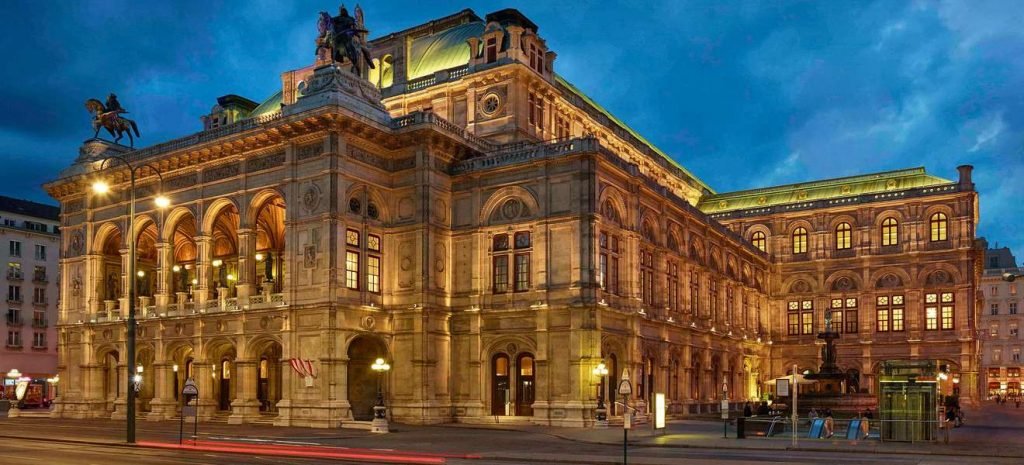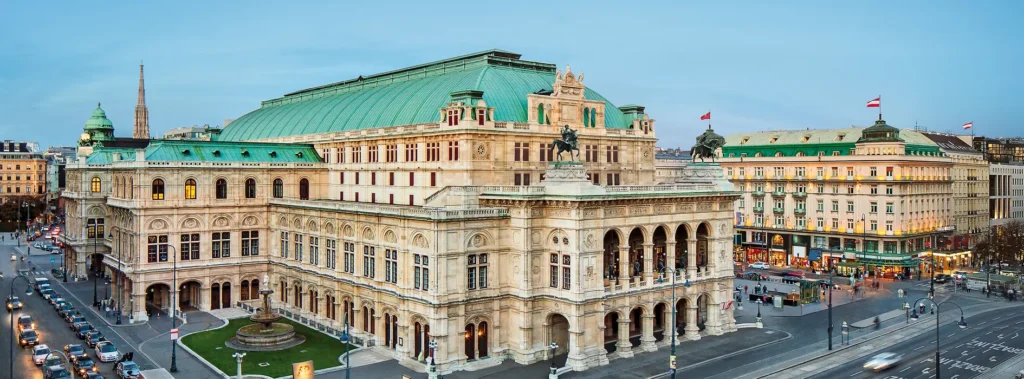Vienna, a city renowned for its imperial grandeur and cultural elegance, is also home to one of the most striking civic buildings in Europe: the Wiener Rathaus, or Vienna City Hall. Located on the iconic Ringstrasse boulevard, this neo-Gothic masterpiece is not only the seat of Vienna’s local government but also a vibrant cultural hub that hosts some of the city’s most famous events. With its soaring spires, grand façade, and rich history, the Rathaus is a must-visit destination for travelers exploring Vienna.
A Brief History
Construction of the Wiener Rathaus began in 1872 and was completed in 1883, during Vienna’s ambitious expansion and modernization under Emperor Franz Joseph I. The building was designed by Friedrich von Schmidt, one of the most prominent architects of the 19th century, who chose a Gothic Revival style to emphasize Vienna’s prosperity and civic pride.
Since its inauguration, the Rathaus has served as the seat of the mayor and city council of Vienna, as well as the state parliament of Vienna, which is both a city and a federal state of Austria. Beyond politics, it has become a symbol of Viennese identity and a beloved landmark admired by locals and tourists alike.

Architectural Splendor
The Rathaus is a prime example of neo-Gothic architecture, inspired by the medieval town halls of Flanders and Brabant. Its most distinctive feature is the central tower, standing at 98 meters, crowned by the famous Rathausmann, a statue of an armored knight holding a banner. The Rathausmann has become a symbol of the city and is easily recognizable on Vienna’s skyline.
The building’s elaborate façade is adorned with pointed arches, turrets, and statues, creating an elegant yet imposing presence along the Ringstrasse. Inside, visitors will find grand staircases, high vaulted ceilings, ornate chandeliers, and richly decorated halls such as the Festival Hall (Festsaal), which stretches over 70 meters and is often used for large-scale events and ceremonies.
A Cultural and Social Hub
While the Wiener Rathaus functions as a government building, it is equally renowned for its role as a cultural center. The square in front of the Rathaus, Rathausplatz, transforms throughout the year into a lively venue for festivals and seasonal events.
In winter, it becomes home to Vienna’s most famous Christmas Market, with charming wooden stalls, festive decorations, and a giant ice-skating rink.
In summer, the Film Festival at Rathausplatz draws crowds with open-air screenings of concerts, operas, and movies, accompanied by international food stalls.
Other events include balls, exhibitions, and civic celebrations, making the Rathaus a gathering place for both locals and tourists year-round.

Visitor Experience
Visitors can explore the Rathaus through guided tours, which provide insights into Vienna’s history, architecture, and politics. Highlights of the tours include the Council Chamber, Festival Hall, Senate Chamber, and the Mayor’s reception rooms. The tours also reveal details about the building’s intricate craftsmanship and the significance of its many architectural elements.
Even for those who do not enter the building, the Rathausplatz is worth visiting. Its lively atmosphere, seasonal markets, and picturesque setting against the neo-Gothic façade make it one of Vienna’s most photographed spots.
Travel Tips
Best Time to Visit: Visit in December for the magical Christmas Market or in summer for the open-air film festival.
Getting There: Easily accessible via tram, metro (U2 Rathaus station), or on foot along the Ringstrasse.
Nearby Attractions: The Austrian Parliament Building, Burgtheater, Volksgarten, and Hofburg Palace are all within walking distance.
What to Bring: A camera for the breathtaking architecture and comfortable shoes for walking through Rathausplatz and the nearby gardens.
Conclusion
The Wiener Rathaus is much more than a city hall—it is a landmark that embodies Vienna’s history, architectural beauty, and lively cultural traditions. With its Gothic Revival elegance, political significance, and role as the backdrop for some of Vienna’s most iconic events, the Rathaus offers visitors a deeper understanding of the city’s character. Whether admired from the outside, explored on a tour, or experienced during one of its many festivals, the Wiener Rathaus is a destination that leaves every traveler with lasting memories of Vienna’s vibrant spirit.





















